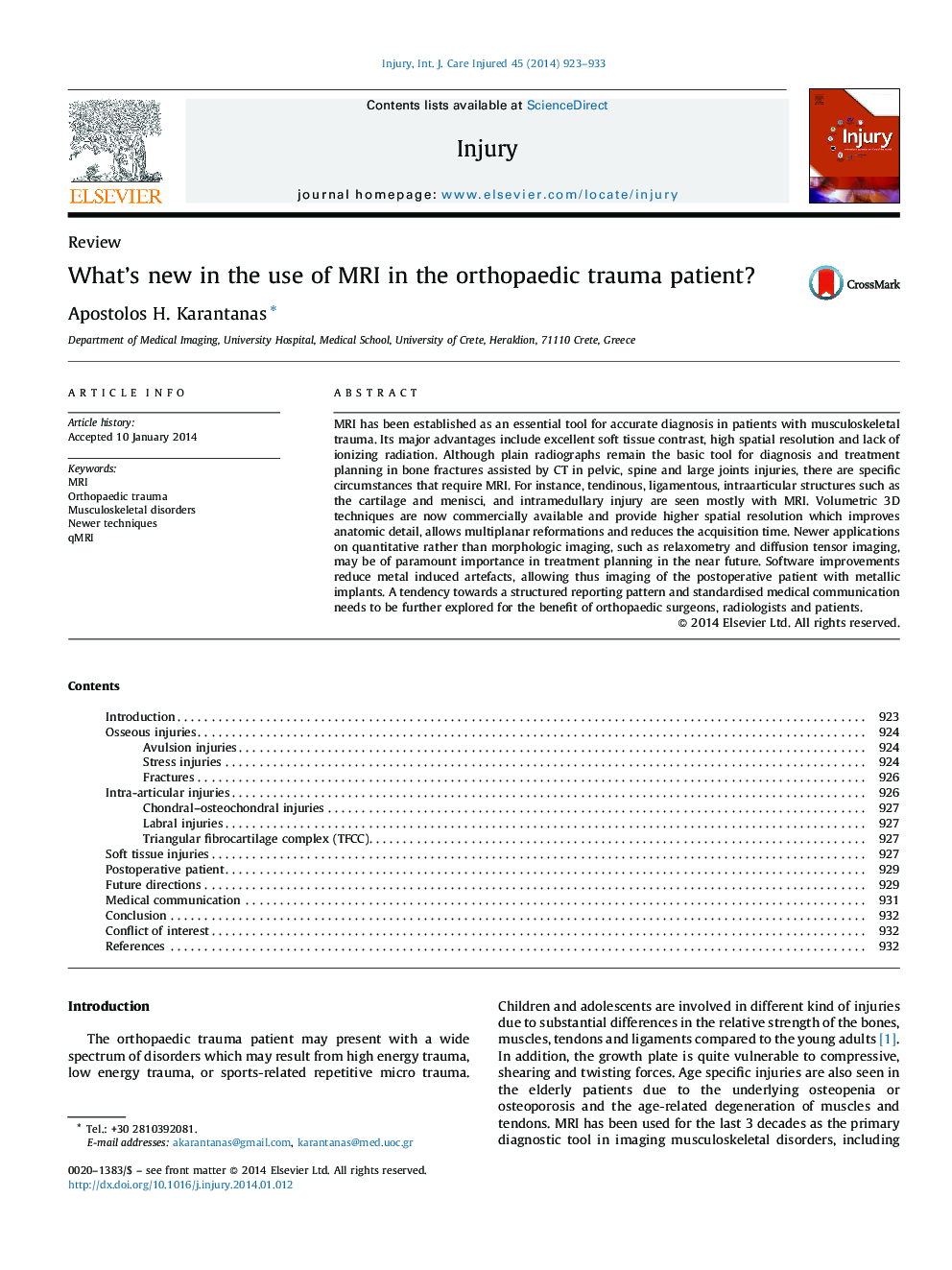| Article ID | Journal | Published Year | Pages | File Type |
|---|---|---|---|---|
| 3239691 | Injury | 2014 | 11 Pages |
MRI has been established as an essential tool for accurate diagnosis in patients with musculoskeletal trauma. Its major advantages include excellent soft tissue contrast, high spatial resolution and lack of ionizing radiation. Although plain radiographs remain the basic tool for diagnosis and treatment planning in bone fractures assisted by CT in pelvic, spine and large joints injuries, there are specific circumstances that require MRI. For instance, tendinous, ligamentous, intraarticular structures such as the cartilage and menisci, and intramedullary injury are seen mostly with MRI. Volumetric 3D techniques are now commercially available and provide higher spatial resolution which improves anatomic detail, allows multiplanar reformations and reduces the acquisition time. Newer applications on quantitative rather than morphologic imaging, such as relaxometry and diffusion tensor imaging, may be of paramount importance in treatment planning in the near future. Software improvements reduce metal induced artefacts, allowing thus imaging of the postoperative patient with metallic implants. A tendency towards a structured reporting pattern and standardised medical communication needs to be further explored for the benefit of orthopaedic surgeons, radiologists and patients.
